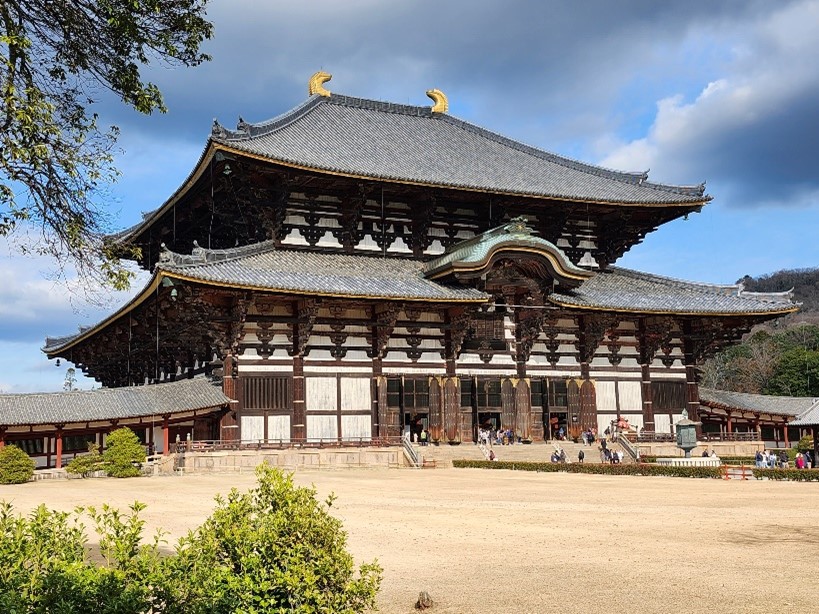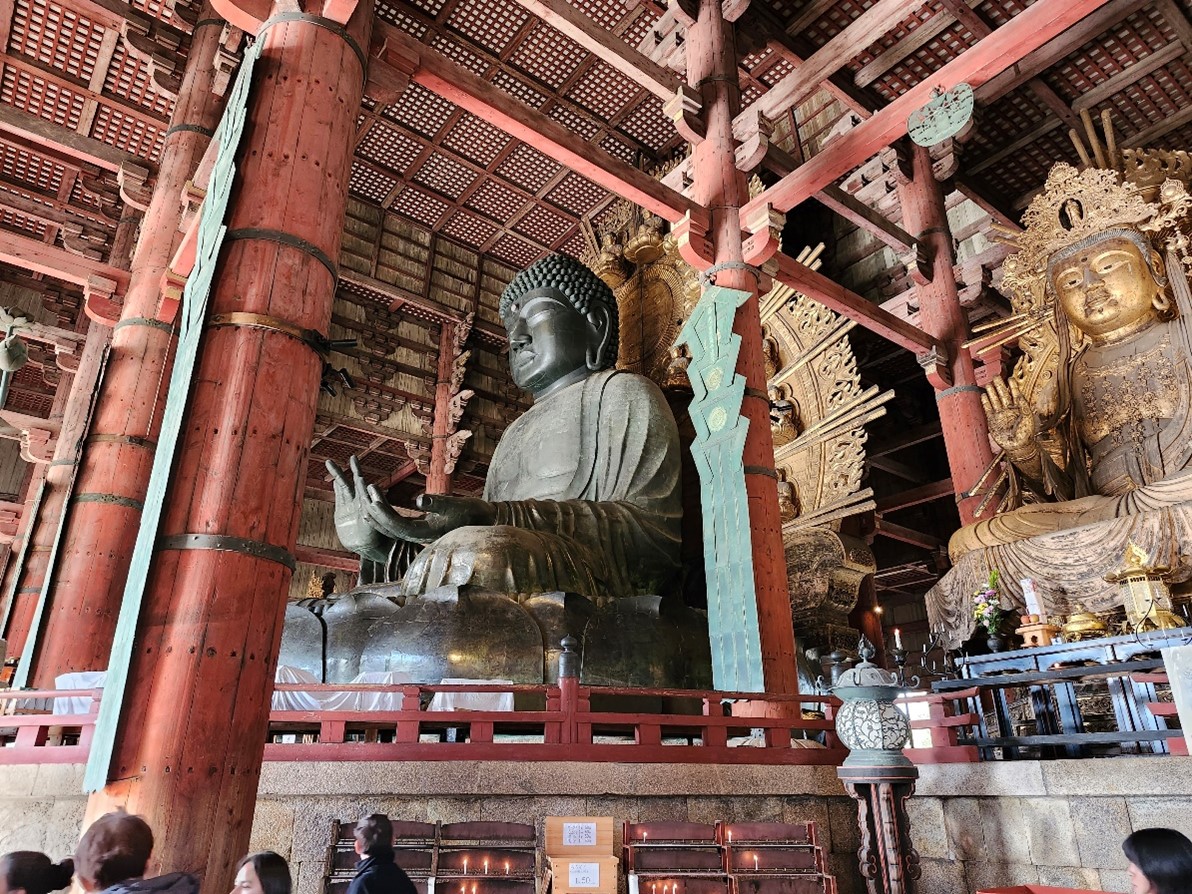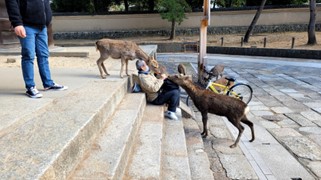Sheldon’s trip to Nara, Japan.

Nara is a popular daytrip destination for tourists travelling on Japan’s “Golden Route,” and is best known for the wild deer walking around the city closest to Nara Park and Tōdaiji (東大寺). While Nara isn’t as developed as neighbouring Osaka or Kyoto, it is an important region where Japanese government and are said to have begun (more so in the South at Asuka). It has numerous ancient imperial burial mounds like keyhole-shaped islands often surrounded by moats. It is a beautiful area that deserves longer visits than a simple daytrip, but should one have the chance to go, Tōdaiji is a worthwhile stop on any architectural pilgrimage.

Great Buddha and a bodhisattva.
Tōdaiji is a Buddhist temple enclosing a 15m-high bronze, seated Buddha statue surrounded by golden bodhisattvas. It was regarded until recently as the largest wooden building in the world, and yet the current rendition is only two-thirds the size of the original. Impressively, traditional Japanese architecture was constructed without using adhesives and nails or screws; instead, they made use of a variety of different joinery techniques to carve the timber to fit together snuggly. The complex, dating back to the 8th Century, was much more expansive and contained many gates and a pair of seven-level pagodas (which used to be among the tallest structures at the time). However, the complex was burned in the 12th Century and was also destroyed by an earthquake in the 18th Century. The main building housing the Great Buddha, the daibutsuden (大仏殿), was reconstructed in imitation of the original structure. The structure is quite impressive, not only for its size and long history, but also its strength. The roof is covered with 110,000 tiles weighing 15kg each, and whose ridge is terminated on either side by large, gold kite’s tails (called shibi 鴟尾) that are as tall as an adult human.
Nara also has some of the oldest temples in the country, such as Hōryūji (法隆寺) which has the oldest wooden structure in the world and was commissioned to be built in 607 by Prince Shōtoku who championed bringing Buddhism to Japan.

Deer asking for snacks.
As for Nara’s deer, they are technically wild animals used to being around humans. In the past, deer were regarded as divine and sacred due to the belief that a god from a shrine in Ibaraki Prefecture, Takemikazuchi, appeared atop a mountain riding a white deer. It was illegal to kill a deer until the mid-17th Century; and so, their numbers grew, and they continued to live close to humans. It is very much discouraged to try to pet the deer as they are wild animals, though that doesn’t stop people from trying to get selfies. Adult males have their sharp horns removed and smoothed down to stumps to avoid harming visitors. One is not normally allowed to feed deer human food, but vendors can be found around Nara Park selling a 10-pack for ¥200 of shika-senbei – deer crackers – that one can give. They even learned to ask for crackers by lowering their heads to the ground as if to bow, and one should reward their request with a cracker. However, many are far too eager and will chase you if they think you have anything (avoid rummaging or touching your bag as they will think you have their favourite treat), and they will aggressively demand snacks and nibble at your clothes for your attention.
Cover image is the Tōdaiji Great Buddha Hall.